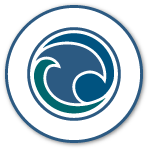ABOUT MSFD
Good environmental status of the marine environment is crucial for the proper functioning of the ecosystem, taking into account biotic and abiotic elements and processes occurring in the water and seabed, as well as for the possibility of sustainable use of marine areas.
Maintaining or restoring borderless maritime areas requires joint action at the national and international levels. An example is the actions taken by Member States in the framework of the implementation of the Directive of the European Parliament and of the Council establishing a framework for community action in the field of marine environmental policy (Marine Strategy Framework Directive - MSFD 2008/56/EC of 17 June 2008). The requirements of the Directive have been taken into account in national legislation (Water Law Act of 20 July 2017 - Journal of Laws of 2023, item 1478).
The primary objective of the directive is to achieve Good Environmental Status (GES), which is defined as … the environmental status of marine waters where these provide ecologically diverse and dynamic oceans and seas which are clean, healthy and productive within their intrinsic conditions, and the use of the marine environment is at a level that is sustainable, thus safeguarding the potential for uses and activities by current and future generations…
MSFD requires EU Member States to develop a strategy to achieve good environmental status in the marine areas under their jurisdiction. The strategy consists of (i) an assessment of the state of the environment with a definition of characteristics typical of good status, (ii) environmental targets, (iii) a monitoring programme and (iv) a marine protection programme. The directive imposes the obligation to update all elements in a 6-year cycle.
According to the RDSM, both the initial assessment and its updates must address at multi-level levels the elements of the marine ecosystem determining its condition. These elements are listed in Commission Directive (EU) 2017/845 of 17 May 2017, amending Directive 2008/56/EC of the European Parliament and of the Council as regards the indicative lists of elements to be taken into account for the preparation of marine strategies and elements characterising the impact of activities and processes on the state of the marine environment. This approach is guaranteed by taking into account the 11 descriptors indicated in Commission Decision (EU) 2017/848 of 17 May 2017, establishing criteria and methodological standards for the good environmental status of marine waters and specifications and standardised methods for monitoring and assessment, and repealing Decision 2010/477/EU. All descriptors must be addressed to the strategies developed by EU Member States, including initial assessment and its updates. Within individual descriptors, which indicate the desired state of the environment in terms of biodiversity and trophic chains and reduction of the impact of pressures associated with alien species, commercial exploitation of fish and crustaceans, eutrophication, seabed integrity, change of hydrographic conditions, hazardous substances, including in edible fish, litter and noise, primary and secondary criteria have been distinguished.
The achievement of good environmental status is verified by assessing indicators describing the state and pressures within individual descriptors.
Carrying out an assessment based on agreed indicators, including those at the regional level, considering all descriptors, guarantees the comprehensiveness and consistency of national assessments in all European seas.

Eleven descriptors taken into account in the assessment of the environmental status of marine waters with assigned status and pressure indicators
- Status Indicators
- Indicators of pressures related to the introduction and exploitation of species
- Indicators of pressures related to the introduction of substances, litter and energy into the environment
- Indicators of physical pressures

XLSX (9,68 KB)


